
Fundamentals
The Hair Identity, as understood within Roothea’s ‘living library,’ represents far more than a simple description of texture or curl pattern. It is a profound declaration, an elemental truth etched into each strand, speaking to lineage, community, and the enduring spirit of textured hair heritage. This concept grounds itself in the earliest human experiences, where hair served as a primary visual lexicon, conveying status, age, marital state, and tribal belonging.
From the dawn of human adornment, communities recognized hair as a powerful extension of self, a visible link to the ancestral plane, and a canvas for collective memory. Its meaning extends beyond mere aesthetics, encompassing the spiritual, social, and even the very survival of communities, particularly those with hair textures often misunderstood or marginalized by dominant societal constructs.
Our exploration begins at the very source, acknowledging the biological marvel of textured hair, which, through countless generations, adapted to diverse environments, offering both protection and a unique expression of being. Ancestral practices, passed down through the ages, intuitively recognized and honored these inherent qualities, crafting rituals of care that resonated with the hair’s natural inclinations. These ancient ways, often dismissed as rudimentary, held a sophisticated understanding of hair’s elemental composition and its relationship to overall wellness. The Hair Identity, in this foundational sense, is the inherent blueprint of one’s hair, interwoven with the historical and cultural narratives that have shaped its appearance and care.

The First Strands ❉ Echoes from the Source
Across continents and through the mists of time, human societies looked to hair as a conduit for understanding. Before written language, hair became a silent, eloquent language, a visual narrative. In ancient African civilizations, for example, hairstyles were not merely fashion statements; they were intricate maps denoting social status, age, marital status, and spiritual beliefs.
A single braid could signify a woman’s availability for marriage, while a complex coiffure might announce her status as a revered elder or a priestess. These styles, often requiring hours of communal effort, reinforced social bonds and transmitted cultural knowledge from one generation to the next.
The earliest tools for hair care, crafted from bone, wood, or shell, bear witness to this deep engagement. They were not simply utilitarian items; they were extensions of a reverence for hair, instruments used in sacred rituals of grooming and adornment. The act of tending to hair was a communal affair, a time for sharing stories, wisdom, and nurturing connections. This collective approach ensured the preservation of hair traditions, embedding them within the very fabric of daily life and communal identity.
Hair Identity, at its core, represents the profound connection between an individual’s strands and their ancestral, communal, and personal narrative, especially for textured hair.

Whispers of the Follicle ❉ Biology and Ancestral Intuition
At a microscopic level, hair is a biological marvel, primarily composed of keratin proteins. Textured hair, with its unique helical structure, presents a distinct set of characteristics. The elliptical shape of the hair follicle, a hallmark of coily and curly strands, gives rise to the beautiful spirals and coils that define this hair type.
This shape causes the hair shaft to twist as it grows, resulting in a varied curl pattern. This structure also means that natural oils produced by the scalp, known as sebum, find it more challenging to travel down the length of the hair shaft, leading to a tendency towards dryness.
Ancestral communities, long before the advent of modern microscopy, understood these intrinsic qualities through observation and inherited wisdom. They developed care practices that addressed the specific needs of textured hair. For instance, the use of rich plant oils and butters, such as shea butter or palm oil, served as intuitive emollients, providing the necessary moisture and protection that coily strands required.
The preference for protective styles, which minimized manipulation and retained moisture, also speaks to an innate understanding of hair’s structural vulnerabilities and strengths. These traditions were not random; they were responses born from centuries of observation and deep respect for the hair’s elemental biology.
Here is a glimpse into some ancient hair care practices and their underlying wisdom:
- Plant-Based Cleansers ❉ Many cultures used saponin-rich plants, like soapberries or specific clays, for gentle cleansing. These materials cleansed without stripping the hair’s natural moisture, a vital aspect for drier textured hair.
- Oil Infusions ❉ Botanical oils, often infused with herbs, were regularly applied. These applications provided essential lipids, creating a protective barrier against environmental elements and aiding in moisture retention.
- Protective Styling ❉ Styles such as braids, twists, and locs, common across African societies, shielded hair from damage, minimized breakage, and helped maintain moisture.
- Communal Grooming ❉ The practice of styling hair together reinforced social bonds and ensured the transmission of knowledge and techniques through generations.
The interplay between the physical attributes of hair and the cultural practices surrounding it forms the bedrock of Hair Identity. It is a testament to how human ingenuity, guided by ancestral knowledge, has always sought to honor and preserve this tangible connection to self and community.
| Element/Practice Natural Oils (e.g. Shea, Palm) |
| Traditional Application Used for conditioning, softening, and adding luster to strands. |
| Underlying Wisdom (Heritage Link) Acknowledged the inherent dryness of textured hair, providing essential lipids and moisture. |
| Element/Practice Clay and Ash Washes |
| Traditional Application Applied for cleansing the scalp and hair, often with detoxifying properties. |
| Underlying Wisdom (Heritage Link) Utilized natural absorbents to purify without harsh stripping, preserving hair's integrity. |
| Element/Practice Combs (Bone/Wood) |
| Traditional Application Crafted for detangling and styling, often intricately carved. |
| Underlying Wisdom (Heritage Link) Represented cultural artistry and served as gentle tools for managing delicate textured hair. |
| Element/Practice Braiding & Coiling |
| Traditional Application Styles like cornrows, twists, and intricate plaits for daily wear and ceremony. |
| Underlying Wisdom (Heritage Link) Protected hair from environmental stressors, preserved length, and conveyed social status or tribal affiliation. |
| Element/Practice These foundational practices reveal an intuitive understanding of hair biology, deeply woven into the cultural fabric of ancestral communities. |
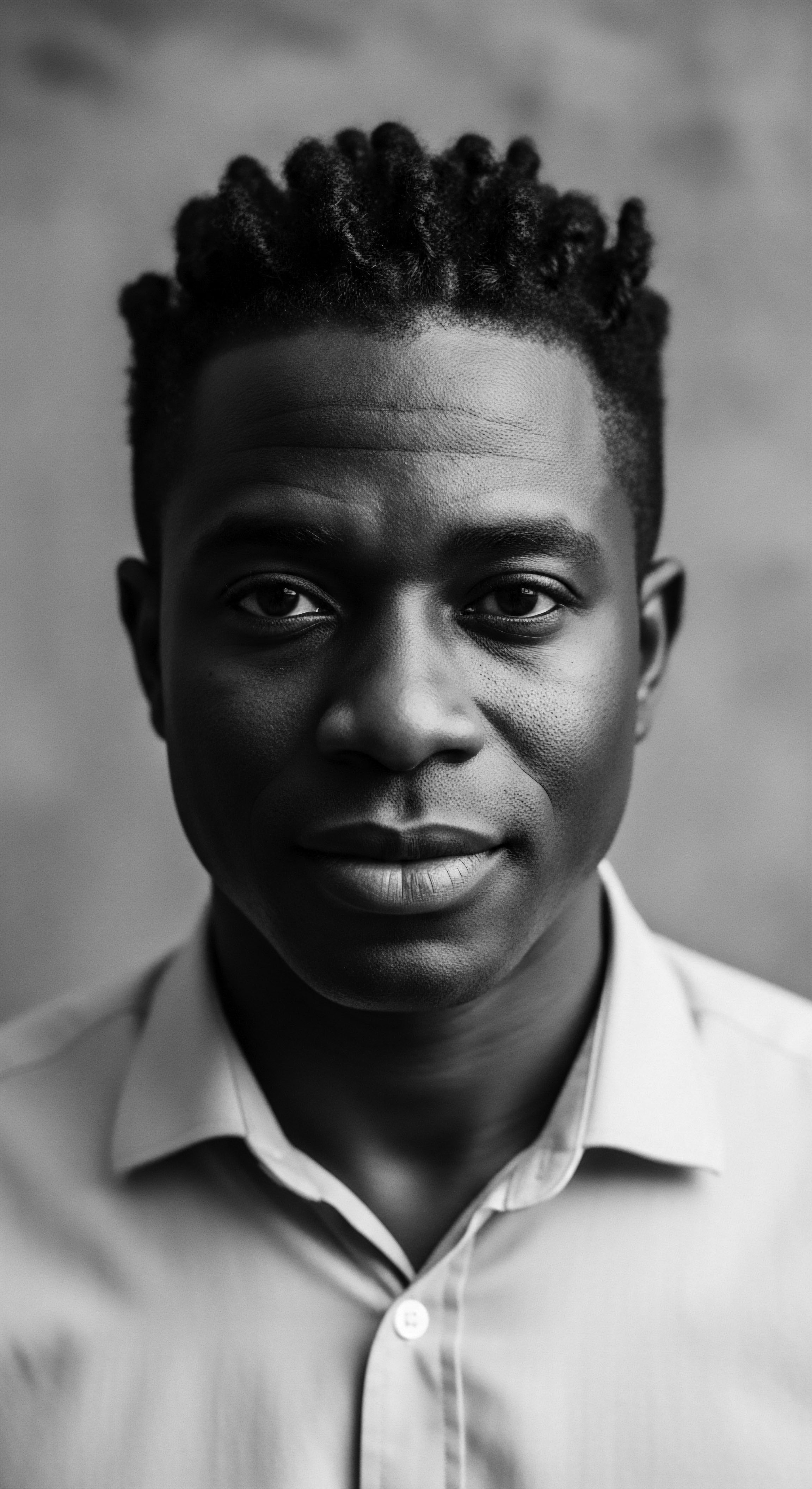
Intermediate
Moving beyond the elemental origins, the intermediate meaning of Hair Identity unfolds as a living, breathing testament to adaptation and continuity. For textured hair, particularly within Black and mixed-race communities, this identity is not static; it is a dynamic inheritance, a continuous dialogue between ancient practices and contemporary expressions. Hair Identity, in this context, clarifies how ancestral wisdom, often passed down through whispered lessons and communal rituals, continues to shape modern care and styling. It represents the enduring power of hair as a vessel for cultural memory, a source of solace, and a site of persistent self-definition.
This section explores the practical applications of Hair Identity within traditional and evolving hair care rituals, highlighting how the spirit of heritage remains vibrant. The ways in which Black and mixed-race individuals have maintained, transformed, and celebrated their hair have always reflected a deep connection to their past, even when confronted with immense pressures to conform. Understanding this layer of Hair Identity means recognizing the resilience inherent in every curl, coil, and wave, and appreciating the stories they tell of survival and triumph.
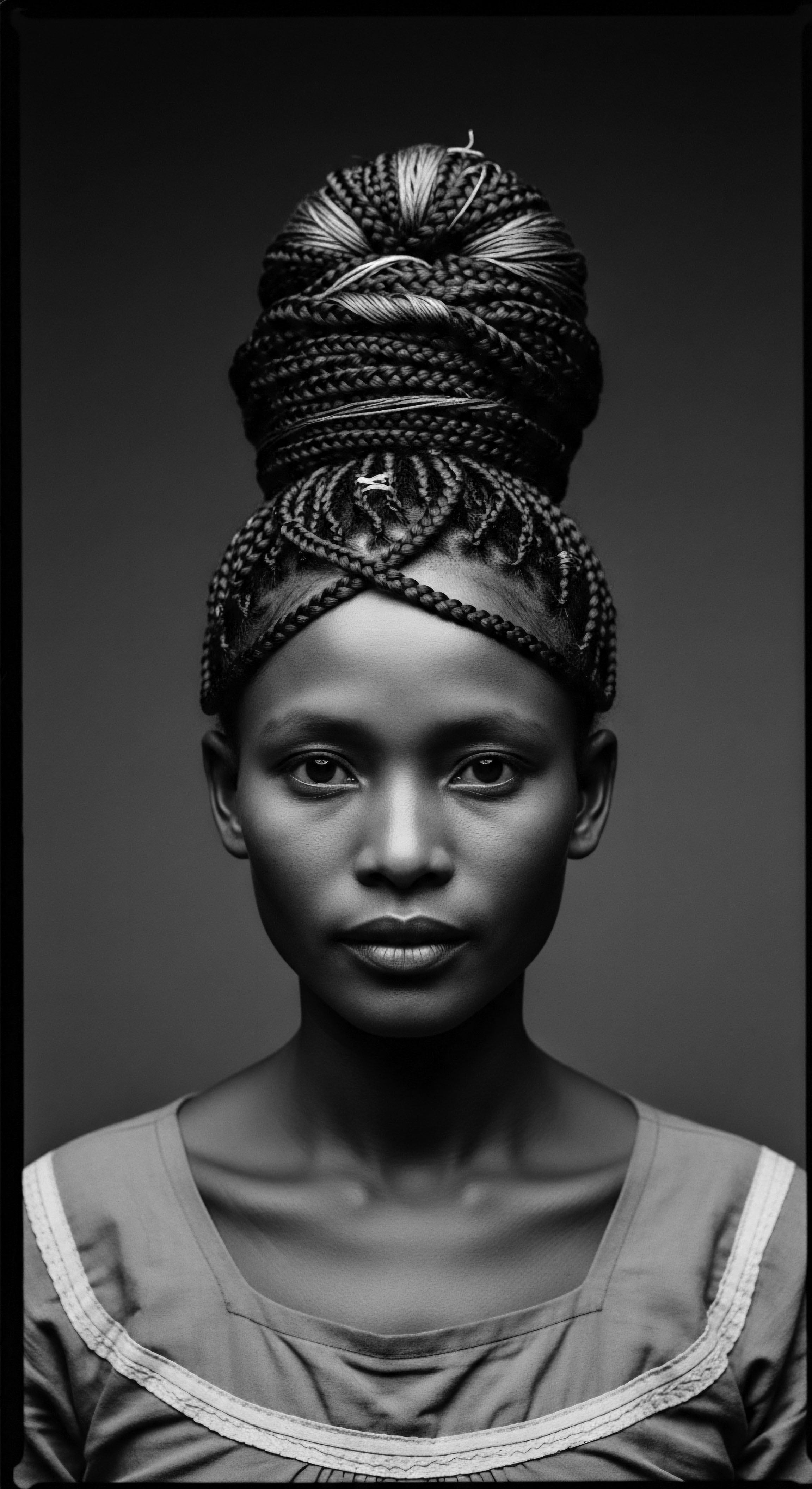
The Tender Thread ❉ Intergenerational Wisdom
The transmission of hair care practices from one generation to the next forms a tender, yet strong, thread of cultural continuity. From the hands of grandmothers teaching their granddaughters to braid, to the communal gathering places where women shared remedies and styling techniques, hair care was a communal act of knowledge transfer. These were not simply lessons in technique; they were lessons in self-worth, community connection, and the celebration of one’s unique heritage. The collective memory of how to care for textured hair, often without the aid of commercially produced items, became a cornerstone of cultural survival.
This intergenerational wisdom encompasses not only methods of cleansing, conditioning, and styling but also a profound understanding of the symbolic weight of hair. Elders often shared narratives that linked hair to spiritual well-being, to the land, and to the strength of the community. This holistic perspective meant that hair care was never separate from life care; it was an integral part of maintaining balance and harmony.
The meaning of Hair Identity deepens as it journeys through generations, carrying the wisdom of ancestral practices and adapting to new expressions of cultural pride.
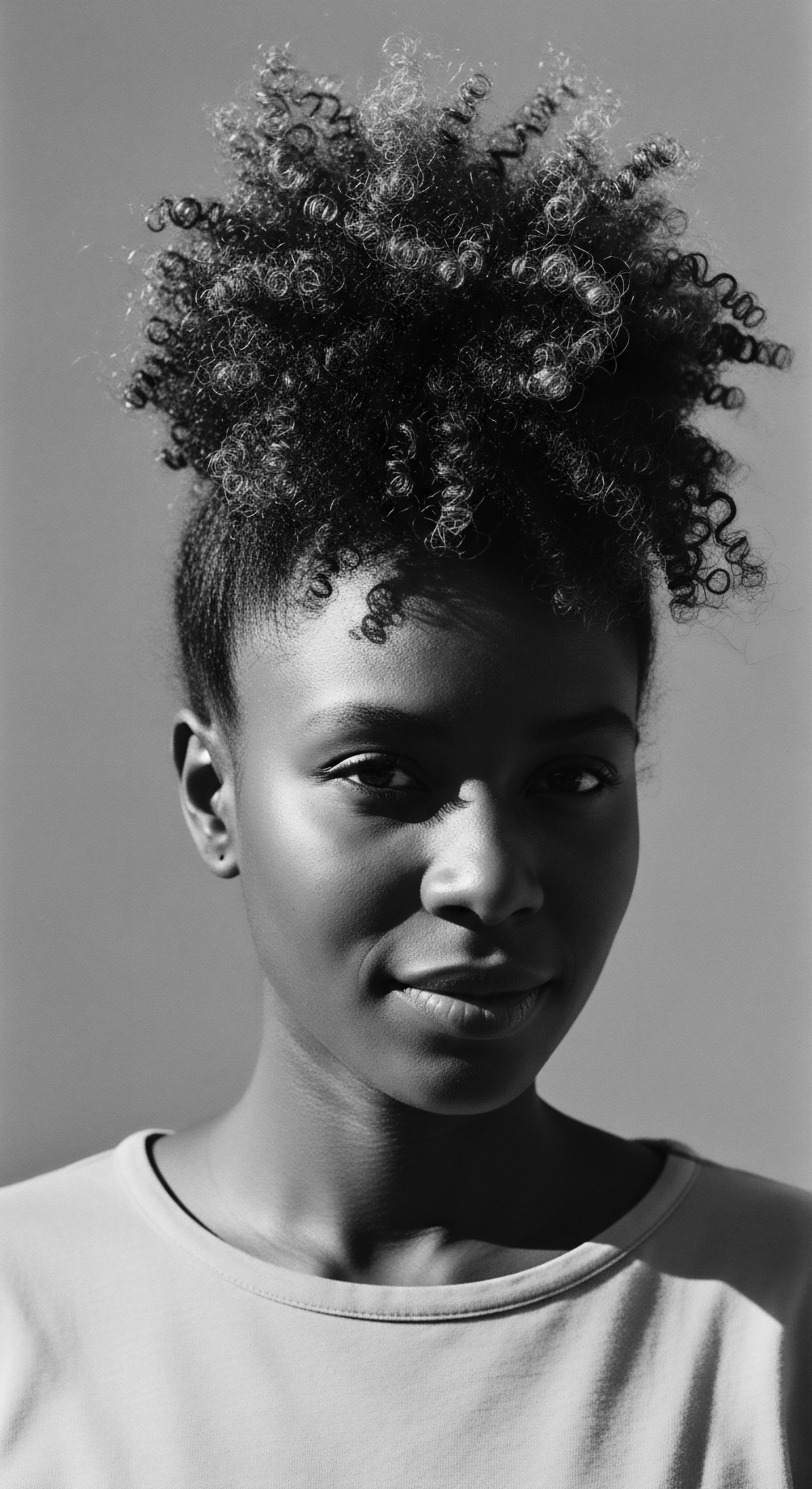
Styling as Storytelling ❉ Hair as a Living Archive
Hairstyles, especially within African diasporic cultures, serve as a living archive, each style telling a story of history, status, and aspiration. From the intricate patterns of cornrows, which could signify tribal affiliation or even be used as maps to freedom during the transatlantic slave trade, to the dignified simplicity of wrapped styles, hair has consistently been a medium of communication. The ability to manipulate textured hair into a myriad of forms allowed for a continuous reinvention of self while retaining a connection to a shared past.
The resilience of these styling traditions is remarkable. Even in the face of forced assimilation and the imposition of Eurocentric beauty standards, practices like braiding, twisting, and knotting persisted, often in hidden spaces. These styles became quiet acts of defiance, preserving a visual link to a heritage that colonizers sought to erase. They also provided a sense of normalcy and dignity in dehumanizing circumstances, allowing individuals to maintain a connection to their inherent worth.
Traditional hair care rituals across the diaspora often included:
- Deep Conditioning with Natural Elements ❉ Using masques of avocado, banana, or specific plant extracts to nourish and moisturize strands, recognizing the need for deep hydration in textured hair.
- Scalp Massages with Herbal Oils ❉ Applying warmed oils infused with herbs like rosemary or peppermint to the scalp, promoting circulation and overall hair health, an intuitive understanding of follicular wellness.
- Protective Styling for Longevity ❉ Employing braids, twists, and various forms of updos to minimize daily manipulation, reduce breakage, and allow hair to rest and grow.
- Communal Grooming Sessions ❉ Gathering together to style hair, a practice that reinforced social bonds, shared techniques, and transmitted cultural narratives and songs.

Resilience Woven ❉ Hair as a Statement of Being
The journey of Hair Identity for Black and mixed-race individuals is profoundly marked by acts of resistance and reclamation. In contexts where textured hair was denigrated or deemed “unprofessional,” the choice to wear one’s hair in its natural state became a powerful political statement. This journey is perhaps most vividly exemplified by historical mandates designed to suppress the visual expression of Black identity through hair.
Consider the Tignon Laws of Louisiana, enacted in 1786. These laws compelled free women of color in New Orleans to cover their hair with a tignon, a scarf or handkerchief, when in public. The intent was clear ❉ to distinguish these women from white women and diminish their perceived beauty and social standing. Yet, these women, with an unwavering spirit of defiance, transformed the very instrument of oppression into a statement of unparalleled style and assertion.
They donned elaborate, colorful tignons, often adorned with jewels and feathers, tying them in intricate ways that drew even more attention to their heads and the beauty they sought to conceal. This act of subversion, turning a symbol of subjugation into one of sartorial and cultural triumph, is a testament to the enduring power of Hair Identity. It demonstrated that true beauty and identity could not be legislated away; they could only be redefined and amplified through creative resilience (Byrd & Tharps, 2014, p. 25).
| Aspect of Hair Identity Hair as a Social Marker |
| Traditional/Ancestral Approach Signified status, age, marital status, tribal affiliation, spiritual connection. |
| Colonial/Dominant Society Imposition Often aimed to erase indigenous markers, forcing conformity to European ideals. |
| Aspect of Hair Identity Care Practices |
| Traditional/Ancestral Approach Emphasized natural ingredients, protective styling, communal grooming. |
| Colonial/Dominant Society Imposition Introduced chemical straighteners, hot combs, and products for achieving Eurocentric textures. |
| Aspect of Hair Identity Aesthetic Valuation |
| Traditional/Ancestral Approach Celebrated diverse textures, coils, and natural volume as beauty. |
| Colonial/Dominant Society Imposition Promoted straight, smooth hair as the sole standard of beauty, often labeling textured hair as "bad." |
| Aspect of Hair Identity Community Role |
| Traditional/Ancestral Approach Fostered bonding through shared styling rituals and knowledge transfer. |
| Colonial/Dominant Society Imposition Disrupted traditional grooming spaces, leading to internalized shame and isolation. |
| Aspect of Hair Identity The contrasting approaches highlight the enduring struggle for self-definition and the profound resilience embedded within textured hair heritage. |

Academic
The advanced understanding of Hair Identity transcends simplistic categorizations, delving into a complex interplay of biological imperatives, socio-cultural constructs, and psychological manifestations. For textured hair, especially within Black and mixed-race experiences, Hair Identity represents a deeply stratified concept. It encompasses the intrinsic genetic coding that dictates curl pattern and porosity, the epigenetic influences shaped by environmental interactions, and the profound historical and contemporary forces that have molded its perception and care.
This academic explication unpacks the layers of Hair Identity, revealing its significance as a dynamic marker of heritage, resilience, and evolving autonomy. It is a compound concept, one that demands a comprehensive lens, acknowledging the interwoven threads of science and ancestral wisdom.
Hair Identity, at this level, is not merely a descriptive term; it is a conceptual framework for analyzing the historical burden of hair-based discrimination, the mechanisms of cultural preservation, and the pathways to collective and individual affirmation. It considers how historical subjugation, such as the systematic denial of traditional grooming tools during slavery (Byrd & Tharps, 2014, p. 29), impacted hair health and perception for generations, and how contemporary movements are reclaiming ancestral practices as acts of wellness and political assertion. Each sentence in this discourse serves to illuminate the intricate relationships between the elemental biology of textured hair and its profound cultural and psychological weight.

The Unbound Helix ❉ Intersections of Biology and Belonging
The biological foundation of Hair Identity lies within the intricate structure of the hair follicle itself. The elliptical cross-section of follicles that produce textured hair leads to a unique distribution of keratin, resulting in hair shafts that twist and turn, forming curls, coils, and waves. This helical growth pattern, while aesthetically captivating, also renders textured hair more susceptible to dryness and breakage due to the difficulty of natural scalp oils traveling down the hair shaft and the points of fragility at each curve. The understanding of this inherent biology, now validated by scientific inquiry, finds its echoes in ancestral care practices that intuitively prioritized moisture retention and minimal manipulation.
Beyond the visible structure, genetic and epigenetic factors play a considerable role in shaping Hair Identity. Genetic predispositions determine the fundamental curl type, density, and color. However, environmental factors and lifestyle choices, through epigenetic modifications, can influence how these genes are expressed, impacting hair health and appearance over a lifetime.
For communities with a rich heritage of diverse hair textures, this biological reality is intertwined with centuries of adaptive care, where generations learned to work harmoniously with their hair’s natural inclinations, rather than against them. This deep knowledge, often transmitted orally, predates modern scientific classification, yet it aligns with contemporary dermatological understandings of textured hair’s unique needs.
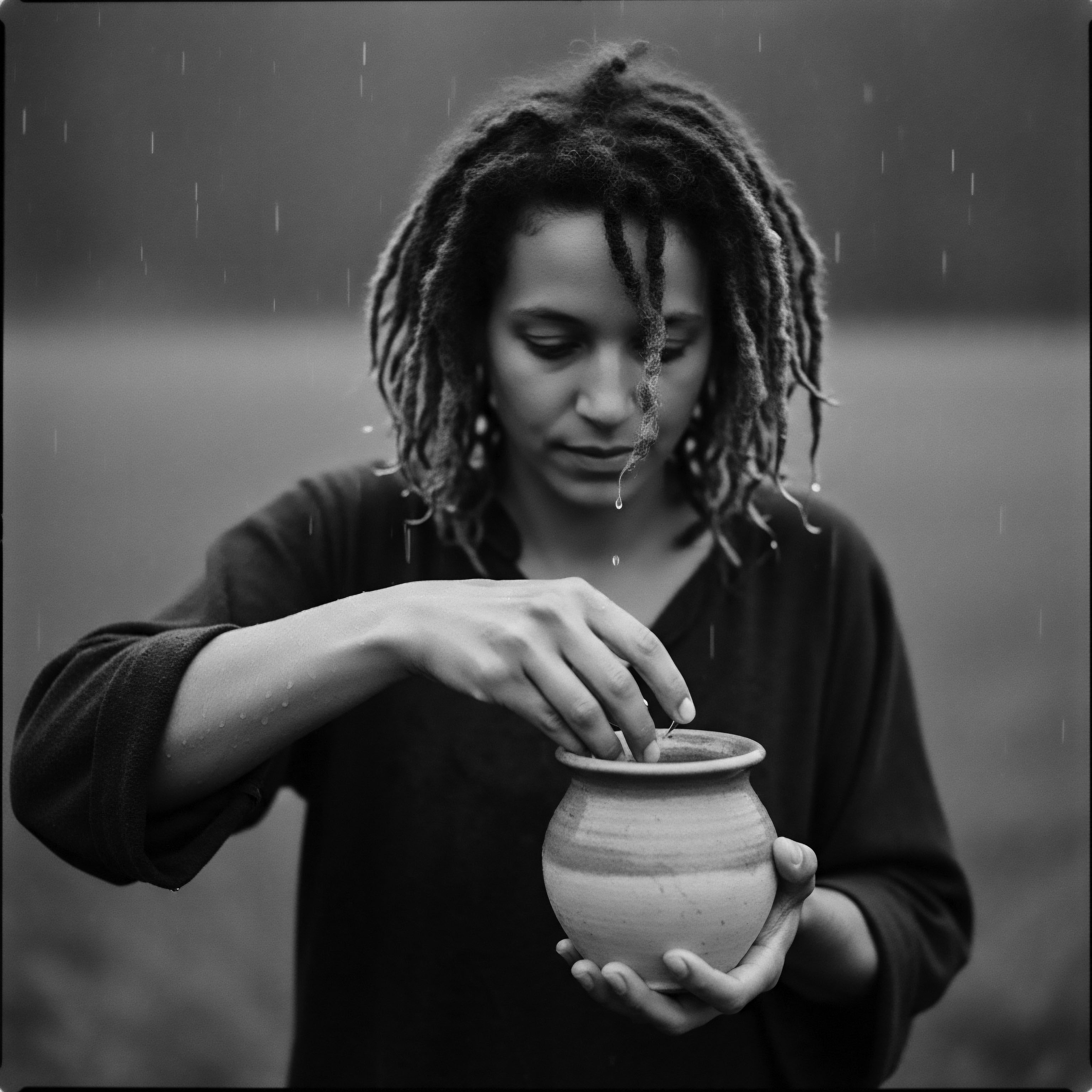
The Socio-Cultural Cartography of Strands ❉ Identity, Power, and Reclamation
Hair Identity functions as a powerful socio-cultural cartography, mapping individual and collective narratives of belonging, power, and resistance. Throughout history, hair has been a primary battleground for identity, particularly for Black and mixed-race communities. The forced assimilation of enslaved Africans, often beginning with the shaving of heads upon arrival in the Americas, was a deliberate act of stripping identity and connection to heritage. This historical trauma laid the groundwork for a deeply complex relationship with hair, where Eurocentric beauty standards often dictated notions of “good” versus “bad” hair, leading to widespread use of chemical straighteners and pressing combs, despite their damaging effects.
The reclamation of natural hair in the 20th and 21st centuries represents a profound resurgence of Hair Identity as a statement of self-acceptance and cultural pride. The “Black is Beautiful” movement of the 1960s, with the widespread adoption of the Afro, marked a pivotal moment of collective affirmation. This was not merely a fashion trend; it was a socio-political declaration, challenging oppressive beauty norms and celebrating ancestral aesthetics. Contemporary natural hair movements continue this legacy, advocating for the freedom to wear one’s hair in its inherent state, without fear of discrimination in educational or professional settings.
The CROWN Act in the United States, which prohibits discrimination based on hair texture or protective hairstyles, serves as a legislative acknowledgment of the historical and ongoing struggles related to Hair Identity. This legal framework recognizes that hair, for many, is an extension of racial and cultural identity, deserving of protection and respect.
Hair Identity, when viewed through an academic lens, reveals a complex interplay of biological predisposition, historical oppression, and enduring cultural resilience.
The long-term consequences of historical hair-based oppression are still being addressed within textured hair communities. Studies have shown the psychological toll of internalizing negative beauty standards, impacting self-esteem and body image. Yet, the natural hair movement offers a counter-narrative, promoting a holistic approach to hair care that prioritizes health and self-acceptance over conformity. This shift represents a powerful act of healing and re-connection to ancestral practices.
Academic research continues to shed light on the multi-dimensional aspects of Hair Identity, particularly concerning textured hair. Key areas of study include:
- Genetics of Hair Morphology ❉ Investigating the specific genes and their variations that determine curl pattern, density, and hair shaft shape across diverse populations.
- Scalp Microbiome and Hair Health ❉ Examining the unique microbial ecosystems of different scalp types and their influence on conditions common to textured hair, such as seborrheic dermatitis.
- Socio-Psychological Impacts of Hair Discrimination ❉ Analyzing the effects of hair bias on mental health, self-perception, and socio-economic opportunities within Black and mixed-race communities.
- Ethnobotany of Traditional Hair Care ❉ Documenting and scientifically validating the efficacy of ancestral plant-based ingredients and practices for hair and scalp wellness.
- Cultural Anthropology of Hair Adornment ❉ Exploring the evolution of hairstyles as cultural markers, political statements, and spiritual symbols across the African diaspora.

Echoes in the Future ❉ Hair Identity as a Blueprint for Wellness and Autonomy
From an advanced, expert perspective, Hair Identity serves as a blueprint for understanding not only the past but also for shaping the future of textured hair care and wellness. The recognition of Hair Identity as a composite of biological uniqueness and cultural heritage offers a pathway for developing products and practices that are genuinely attuned to the needs of Black and mixed-race hair. This involves moving beyond generic solutions to embrace formulations that respect the hair’s inherent structure and the historical wisdom of its care.
For businesses and researchers, this means investing in studies that prioritize the specific requirements of textured hair, moving away from models based on straight hair. It calls for a deeper engagement with ethnobotanical knowledge, exploring the efficacy of traditional African plant extracts and oils, not as exotic novelties, but as scientifically sound components of a holistic hair care regimen. The success of future innovations will be measured not just by aesthetic outcomes, but by their capacity to promote hair health, foster self-acceptance, and honor the rich heritage embedded in every strand. This approach also acknowledges the economic power of the textured hair care market, recognizing it not merely as a consumer demographic, but as a community seeking products and services that align with their cultural values and ancestral wisdom.
| Era/Context Ancient African Civilizations |
| Hair Identity Meaning & Practice (Heritage Focus) A living map of social status, tribal affiliation, spiritual connection, and age. Care rituals were communal and holistic, using natural resources. |
| Societal/Scientific Understanding Intuitive understanding of hair's role in communal structure and spiritual life. Early botanical knowledge applied to care. |
| Era/Context Transatlantic Slave Trade & Enslavement |
| Hair Identity Meaning & Practice (Heritage Focus) A site of forced dehumanization and resistance. Hair often shorn, but ancestral practices persisted in secret as acts of defiance. |
| Societal/Scientific Understanding Systematic erasure of identity; imposed Eurocentric beauty standards. Scientific understanding of textured hair was minimal or distorted. |
| Era/Context Post-Emancipation & Jim Crow |
| Hair Identity Meaning & Practice (Heritage Focus) A symbol of aspiration for social mobility, often through chemical straightening. Emergence of Black-owned beauty enterprises as economic hubs. |
| Societal/Scientific Understanding Limited scientific understanding of textured hair, leading to damaging practices. Early Black entrepreneurs began to address specific hair needs. |
| Era/Context Civil Rights Era & Black Power (1960s-70s) |
| Hair Identity Meaning & Practice (Heritage Focus) A powerful statement of racial pride and political assertion (e.g. the Afro). Rejection of Eurocentric norms. |
| Societal/Scientific Understanding Sociological recognition of hair as a political symbol. Beginnings of discourse around natural hair aesthetics. |
| Era/Context Contemporary Natural Hair Movement |
| Hair Identity Meaning & Practice (Heritage Focus) A journey of self-acceptance, ancestral connection, and holistic wellness. Advocacy for anti-discrimination legislation. |
| Societal/Scientific Understanding Growing scientific research into textured hair biology and ethnobotany. Legal recognition of hair as a protected cultural trait. |
| Era/Context The enduring significance of Hair Identity is its continuous evolution, reflecting the persistent quest for autonomy and celebration of heritage. |

Reflection on the Heritage of Hair Identity
The journey through the intricate layers of Hair Identity reveals a truth far deeper than superficial appearance. It is a profound meditation on the enduring spirit of textured hair, a testament to its capacity to carry stories, wisdom, and resilience across countless generations. From the earliest whispers of ancestral care to the contemporary movements of reclamation, hair has remained a vibrant conduit for heritage, a living archive etched onto our very beings. Each curl, each coil, each wave holds a unique history, a narrative of survival, adaptation, and triumph against formidable odds.
This understanding invites us to view hair not merely as a biological appendage, but as a sacred extension of self, deeply connected to the earth, to community, and to the wisdom of those who came before. It prompts us to approach textured hair with reverence, recognizing its inherent beauty and the profound ancestral knowledge embedded within its care. The ‘Soul of a Strand’ ethos reminds us that when we tend to our hair, we are participating in a timeless ritual, honoring a legacy that speaks of strength, creativity, and an unyielding commitment to self-definition. The future of hair care, therefore, rests upon this foundation of heritage, urging us to listen to the whispers of the past, to learn from the wisdom of our ancestors, and to celebrate the unbound helix that connects us all.
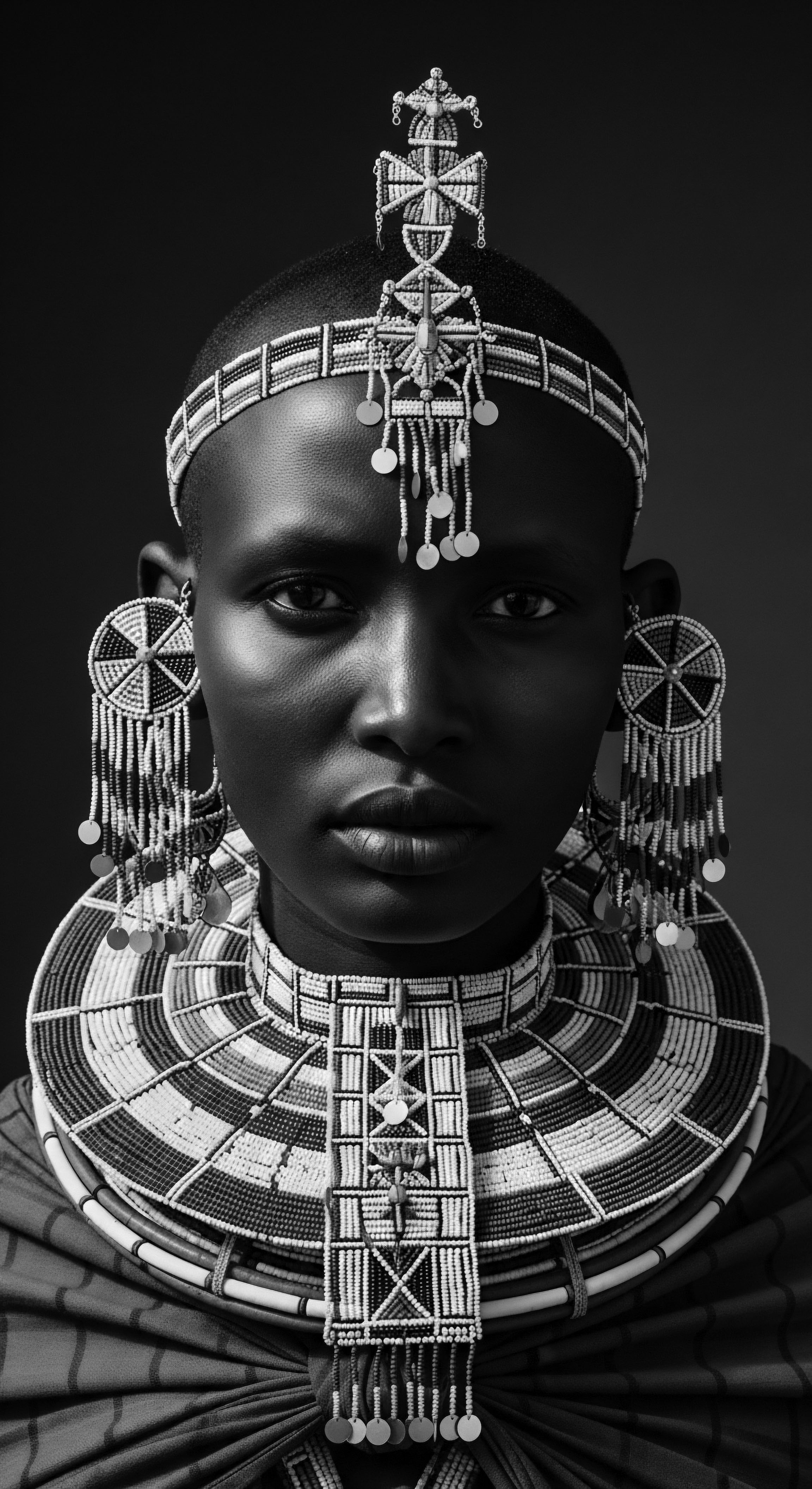
References
- Byrd, A. D. & Tharps, L. L. (2014). Hair Story ❉ Untangling the Roots of Black Hair in America. St. Martin’s Press.
- Holloway, K. F. C. (2002). Passed On ❉ African American Mourning Stories. Duke University Press.
- Sieber, R. & Herreman, F. (Eds.). (1999). Hair in African Art and Culture. Prestel Pub.
- Tarlo, E. (2016). Entanglement ❉ The Secret Lives of Hair. Oneworld Publications.
- Mouchane, M. Taybi, H. Gouitaa, N. & Assem, N. (2024). Ethnobotanical Survey of Medicinal Plants used in the Treatment and Care of Hair in Karia ba Mohamed (Northern Morocco). Journal of Medicinal Plants and By-products, 1 (1), 201-208.
- Berg, C. (1951). The Unconscious Significance of Hair. Routledge.
- Essel, K. (2023). The SAGE Encyclopedia of African Cultural Heritage in North America ❉ Hairstyles, Traditional African. ResearchGate .
- Moussa, M. & El Ftouh, M. (2024). Cosmetopoeia of African Plants in Hair Treatment and Care ❉ Topical Nutrition and the Antidiabetic Connection? Diversity, 16 (2), 96.
